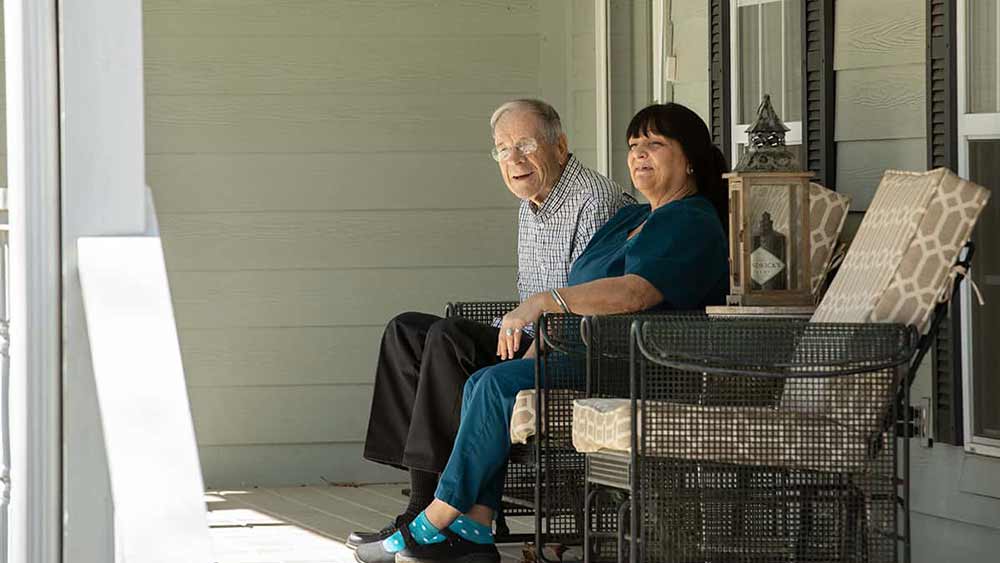

Senior Lifestyle Trends and Options All About Aging in the Right Place
Aging in the new millennium increasingly focuses on independence and flexibility with increased senior lifestyle options and living trends. Today’s older demographic has much different lifestyle expectations and choices than their parents and grandparents did.
Start with the fact that people are on average living longer, healthier lives. Whether seniors retire or continue working, many have the health, time and income to live life on their own terms, rather than some old societal or family norm of getting older having to mean slowing down or fading away.
Increased life expectancies and an expanding over-65 population, combined with the expressed desire of most seniors to age in place, have created a multibillion-dollar service industry offering seniors ever-growing options for pursuing the lifestyle of their choice.
Seniors can select from a variety of companion care, home health care, adult day care, transportation and errand services, as well as everything from curbside pickup, telehealth, Zoom and FaceTime, to make their life more convenient.
Even designers, builders and remodelers are responding by creating adaptive home fixtures and personal communication technologies to help ensure the home is a safe, interactive place.
Multigenerational Living and Staying Connected Is Trending
A trend finding its way toward many cities and towns is planned multigenerational living communities. Multigenerational living can still happen within families, but for most seniors and their families, it’s not an option, which is why developers build planned communities appealing to a broad age spectrum. Some of these developments are located on or adjacent to university campuses, providing residents, students, faculty and staff ample opportunity for mixing with each other.
The pandemic experience has revealed the value of human connection at a time when circumstances and technologies make isolation all too common. For seniors living in retirement or assisted living communities, there’s a growing emphasis on communal gathering areas and “neighborhoods” to encourage more personal interaction and engagement options.
Most seniors who are mobile have no shortage of nearby destinations and attractions to satisfy their curiosity. Even seniors with mobility issues can find things to do that accommodate their disability.
Outdoor spaces and activities free seniors from being cooped up inside and connect them to nature. That’s why outdoor features are being integrated into more senior living arrangement options.
Affinity Communities
In this polarized America, divisions abound around race, ethnicity, religion, politics, etc. Seniors seeking to live where they feel wanted should carefully vet any neighborhood or community to try and head off any biases, implied or otherwise, that may make them feel unwelcome or uncomfortable. A desire to live among people who share a like background, set of values and/or interests is why affinity communities are a good option for those seniors who can access and afford them.
Amenities Such as Pets and Recreational Options
Experts agree that senior living options and lifestyles are trending to include designed amenities and activities such as fitness centers, recreational fields and courts, walking trails, gardens, pop-up grocery stores and farmers markets, hobby clubs and interest groups that enhance the needs and desires of active seniors.
The companionship of pets is proven to help reduce stress, and pet owners shouldn’t have to give up their beloved dogs and cats to live in a senior community that forbids them. That’s why more senior communities are pet-friendly. It’s a simple accommodation to help make residents feel whole and happy.
Aging in the Right Place
If there’s an overriding theme in senior living trends, it’s the idea of not just aging in place, but aging in the RIGHT place for them. Housing is a significant quality-of-life component of one’s well-being, which is why it’s vital for seniors to choose a dwelling or lifestyle option that’s the right fit for them. What constitutes right for one person or couple may not look the same for another, just as what’s feasible differs based on cost, income, location, etc. Whether a senior spends most of their time at home or only retreats there after frequent travel, whether it’s mainly a private space for the senior and close family/friends or a social place that hosts parties, home needs to feel safe, stable, comfortable and relaxing. After all, home is supposed to be a sanctuary. An old saying goes that home is where the heart is, and studies confirm that older people fare better health-wise at home than in other residential settings.
Wherever and however a senior makes a home, it’s important that they retain a sense of purpose that motivates them to get out of bed, move around and participate. A circle of family, friends and neighbors who encourage an active lifestyle can be a boost to live as well and fully as one’s health and budget allow. Today’s seniors are less prone to make concessions to age. Rather, they expect accommodations to meet them where they are at. As concepts about aging advance, senior lifestyle needs and desires are being given the same consideration as those of youth or young adults.
Aging in the right place is going to be supported by increasingly personalized services and products that respond to each senior’s lifestyle. It is part of a sea of change happening with older Americans. As their sheer numbers grow and they remain active citizens and consumers for longer spans, their presence and impact get harder to ignore or minimize. Indeed, industries will more and more cater to them in the new millennium. It will be up to public-private stakeholders to ensure there is not a widening gap between senior haves and have-nots based on what some can and cannot afford.
How Right at Home Can Help
Right at Home’s professional in-home caregivers provide services that support senior clients’ physical and emotional health, no matter where they call home. Our trained and screened caregivers can drive clients to and from appointments with doctors and other providers and help clients follow their doctors’ diet, exercise and medication recommendations. Right at Home’s unique five-step process ensures the right fit for your family. Download our FREE Adult Caregiving Guide below, full of helpful tips as you’re caring for your loved one. Or, use our location finder to contact your local Right at Home and ask for a FREE in-home consultation.







